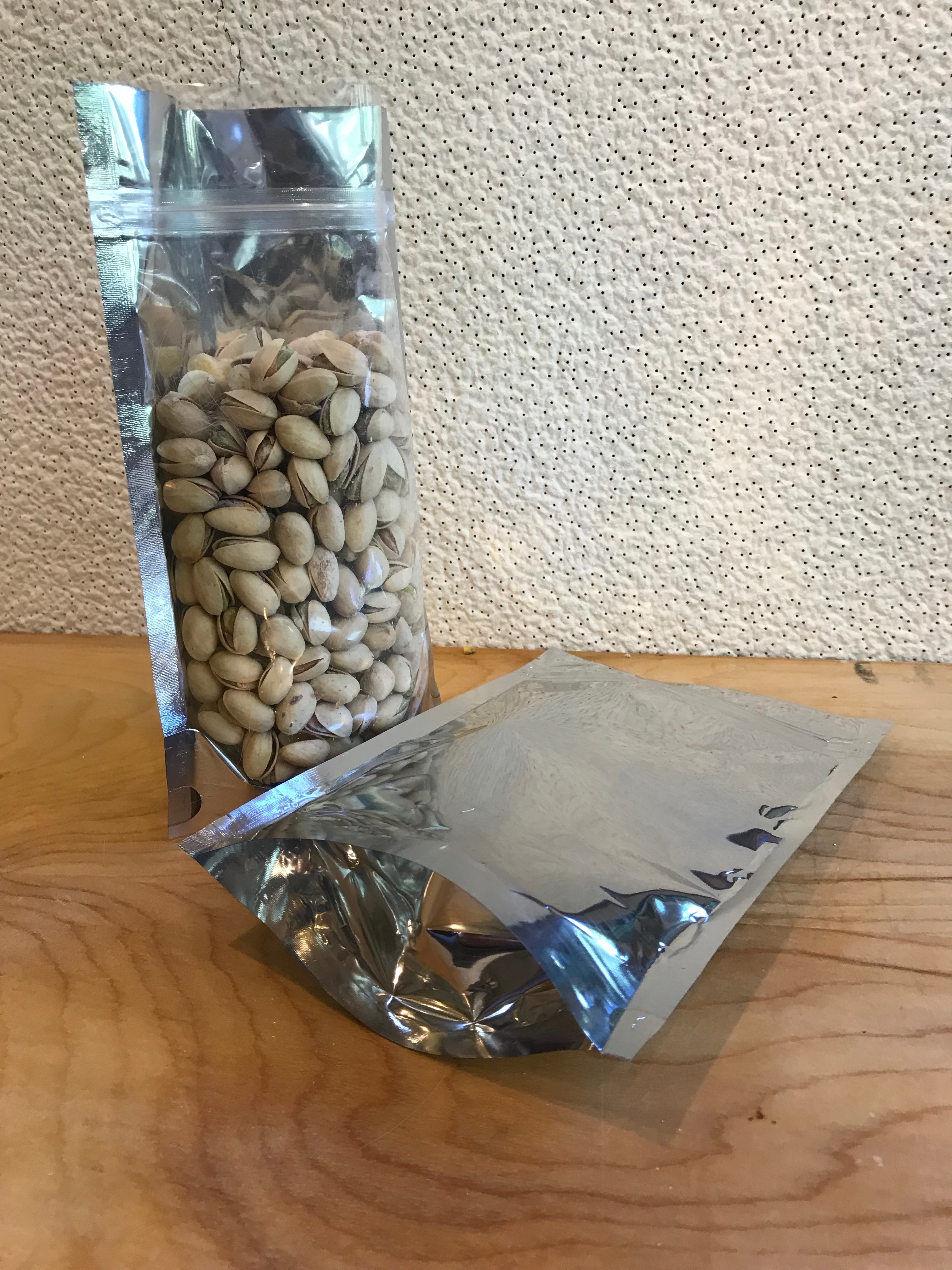Stand-up pouch on:
[Wikipedia]
[Google]
[Amazon]



 Stand-up pouch is a type of flexible packaging which is able to stand erect on its bottom for display, storage, and use. It is a type of
Stand-up pouch is a type of flexible packaging which is able to stand erect on its bottom for display, storage, and use. It is a type of
Thimonnier Company
which trademarked the name "Doypack" (from ''DOY''en ‘'PACK''aging). Development of materials, design options, and equipment increased in the 1980s and 1990s. Development of the



 Stand-up pouch is a type of flexible packaging which is able to stand erect on its bottom for display, storage, and use. It is a type of
Stand-up pouch is a type of flexible packaging which is able to stand erect on its bottom for display, storage, and use. It is a type of plastic bag
A plastic bag, poly bag, or pouch is a type of container made of thin, flexible, plastic film, nonwoven fabric, or plastic textile. Plastic bags are used for containing and transporting goods such as foods, produce, powders, ice, magazines ...
but sometimes also has plastic bottle
A plastic bottle is a bottle constructed from high-density or low density plastic. Plastic bottles are typically used to store liquids such as water, soft drinks, motor oil, cooking oil, medicine, shampoo, milk, and ink. The size ranges from ...
characteristics. Doypacks are commonly used for powders or ready-to-drink beverages. The bottom part of a stand-up pouch is gusseted to provide support for display or use.
They can be aseptically filled or filled on normal packaging lines.
History
Early work on stand-up pouches was conducted in France by Leon and Louis Doyen. Louis Doyen was president oThimonnier Company
which trademarked the name "Doypack" (from ''DOY''en ‘'PACK''aging). Development of materials, design options, and equipment increased in the 1980s and 1990s. Development of the
retort pouch
A retort pouch or retortable pouch is a type of food packaging made from a laminate of flexible plastic and metal foils. It allows the sterile packaging of a wide variety of food and drink handled by aseptic processing, and is used as an alternativ ...
was closely related. It is currently a very widely used package form.
Construction
The flexible pouches are usually constructed of multi-layer materials: various plastic films, paper, foil, etc. Pouches are often printed with high-impact graphics or sometimes have attached labels. The materials must have specialized heat-seal properties to allow conversion into pouches. The most common pouch has bottom gussets to form a "W" which opens to allow a flat bottom. Side gussets are also sometimes used. Several design options are available. Inclusion of pour spouts and reclosable zip strips are common.Equipment
The packaging machinery involved typically forms the pouch from preprinted roll stock. The preformed pouches are shipped to a packager where they are filled and the top is sealed. The alternative is an integral form-fill-seal machine, whethervertical
Vertical is a geometric term of location which may refer to:
* Vertical direction, the direction aligned with the direction of the force of gravity, up or down
* Vertical (angles), a pair of angles opposite each other, formed by two intersecting s ...
or horizontal. The equipment forms the pouches, fills the pouches in-line, and seals them. With foods, drinks, or medical products, special sanitizing and wash-down requirements are critical.
The resulting equipment is sometimes complex and expensive. Packagers who do not have the volume to fill a machine to its capacity often use contract packagers.
References
Bibliography
* Soroka, W, "Fundamentals of Packaging Technology", IoPP, 2002, * Yam, K. L., "Encyclopedia of Packaging Technology", John Wiley & Sons, 2009, {{Bags Plastics applications Containers Bags